Case 02 Face Tracking
Introduction
This course will guide students through the creation of a face tracking device using the Nezha Inventor Kit V2 and the AI Accessories Pack. By combining mechanical design and AI technology, students will learn how to use the face recognition function of the AI lens. This project will develop students' creative thinking and problem solving skills and allow them to experience the fusion of technology and mechanics.
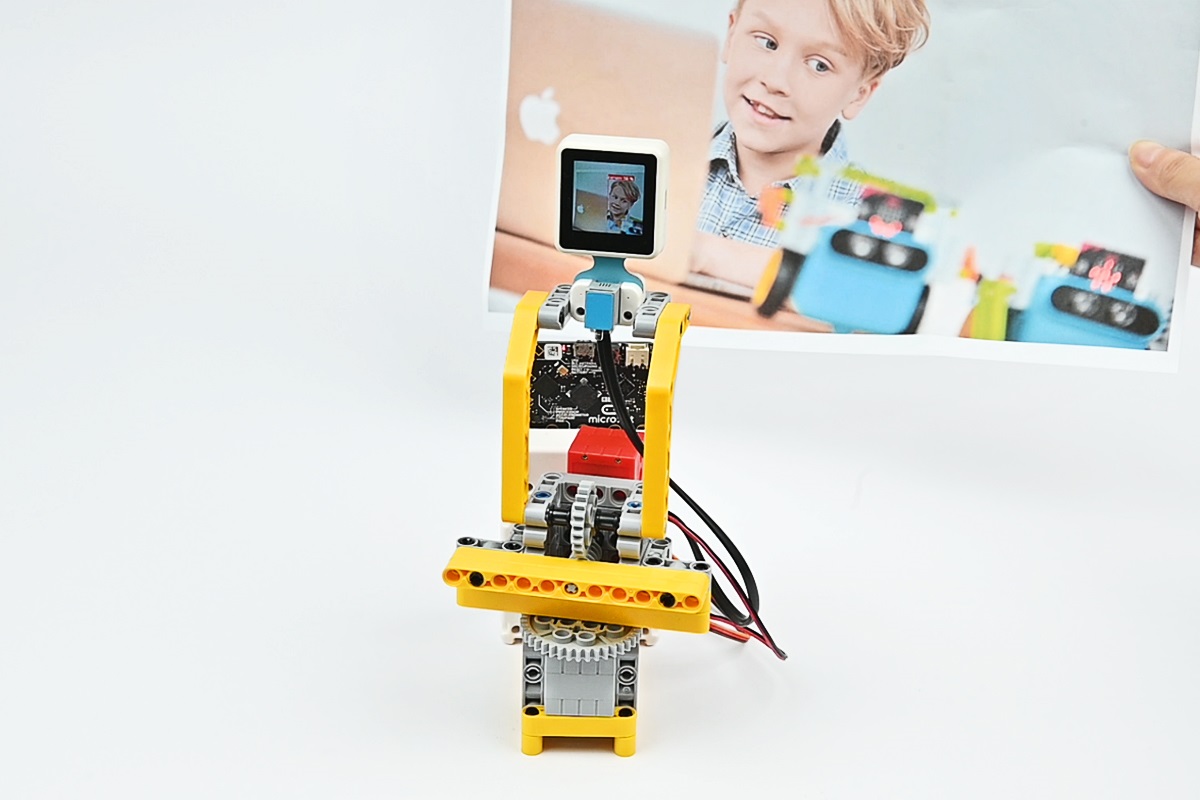
Teaching Objectives
- Understand the principles and functions of face recognition for AI lens.
- Learn to make an AI face tracking device.
- Learn the principles and use of worm gears.
- Develop problem solving and creative design skills.
Teaching Preparation
A computer
Teaching Process
Introduce
The teacher can guide students to think about the following questions: what is face recognition technology? What are its real-life applications? How can this technology be applied to an interesting device, such as a face tracking device? Through these questions, students' interest is stimulated and they are led to think about how to combine technology with creativity.
Hi everyone! In today's lesson, we're going to enter a world of technology and work together to create a super cool AI face tracking device. This device is able to work like magic, detecting if someone is approaching within a predetermined range and focusing attention on them through the face recognition feature of the AI lens.
At the same time, we will introduce the knowledge of worm gears, a concept that allows for very interesting functions in mechanical devices. Let's combine this knowledge and skills to create an amazing AI face tracking device!
Are you guys ready? Let's enter this world of innovation together and create wonders with the magic of technology!
Exploration
In groups, students will be asked to think about how an AI camera can be used to create an AI face tracking device, focusing on the use of the face recognition feature and possible scenarios for the use of face recognition devices in their lives.
- How does face recognition technology work? How does it recognise a person's face?
- How does the AI face tracking device work?
- What are the practical applications of this device?
Practice
Work in groups to build an AI face-tracking device from building block materials according to your own design scheme.
Build an AI face tracking device from building blocks according to your own design.
Example
Building Steps



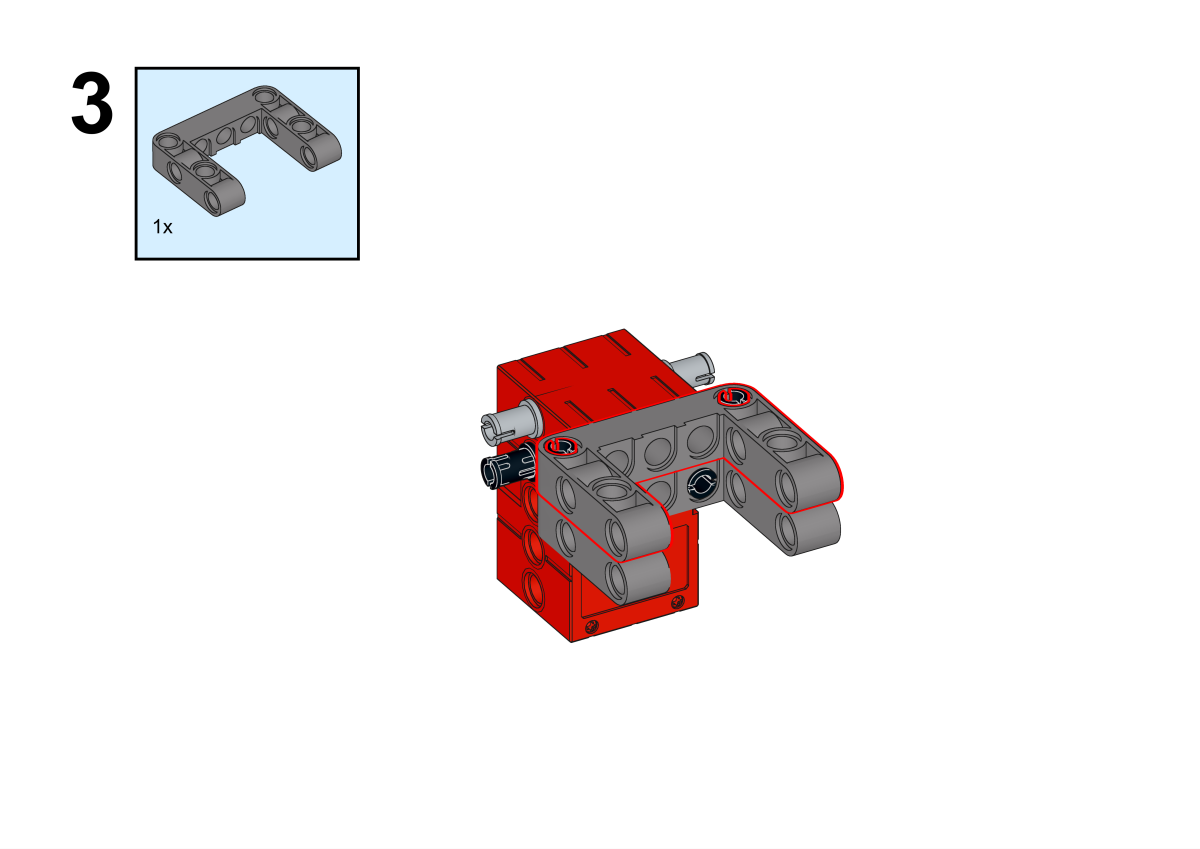
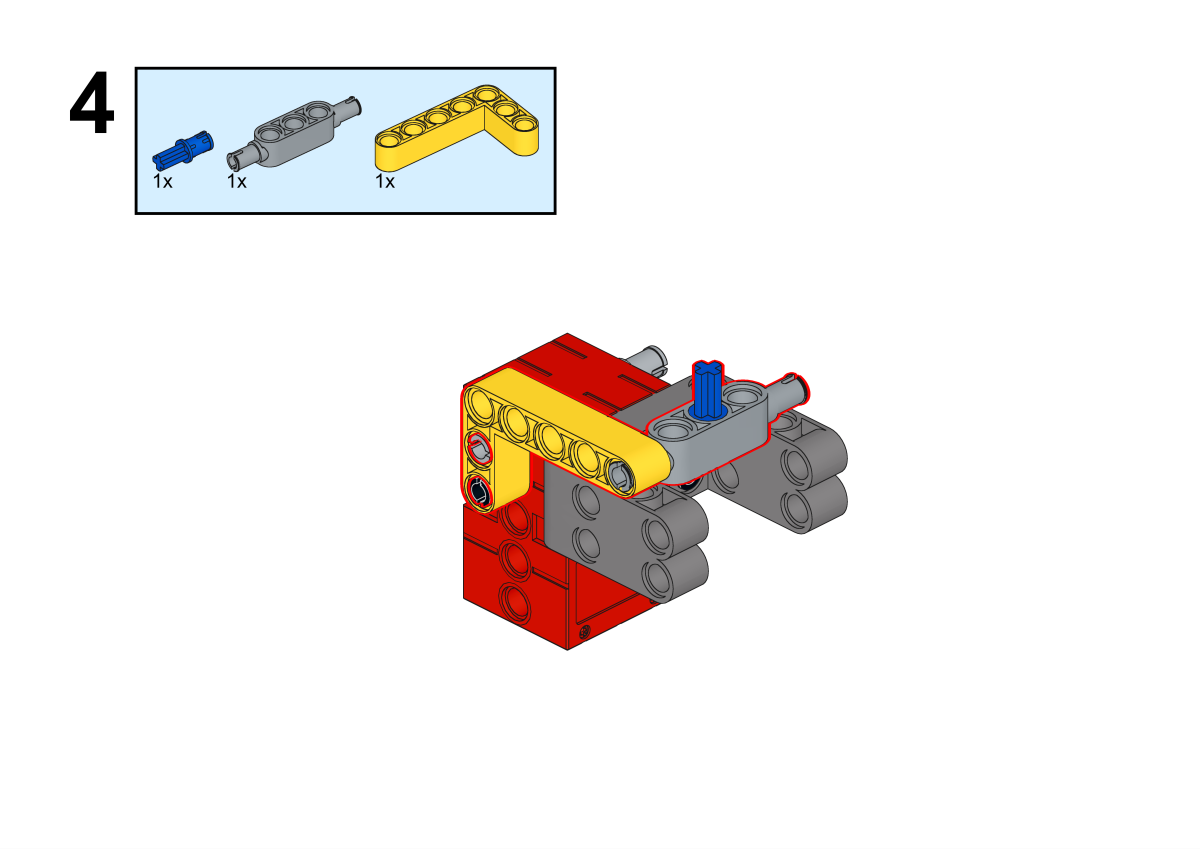
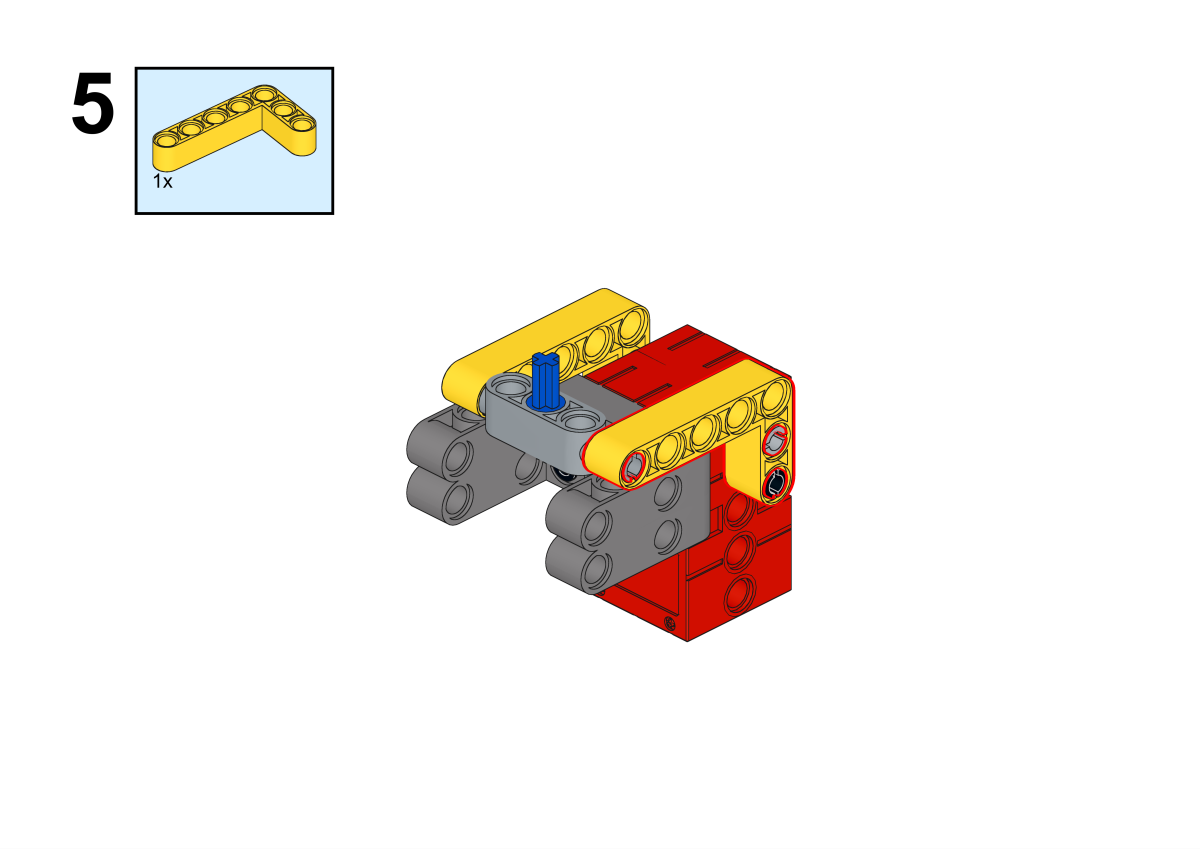

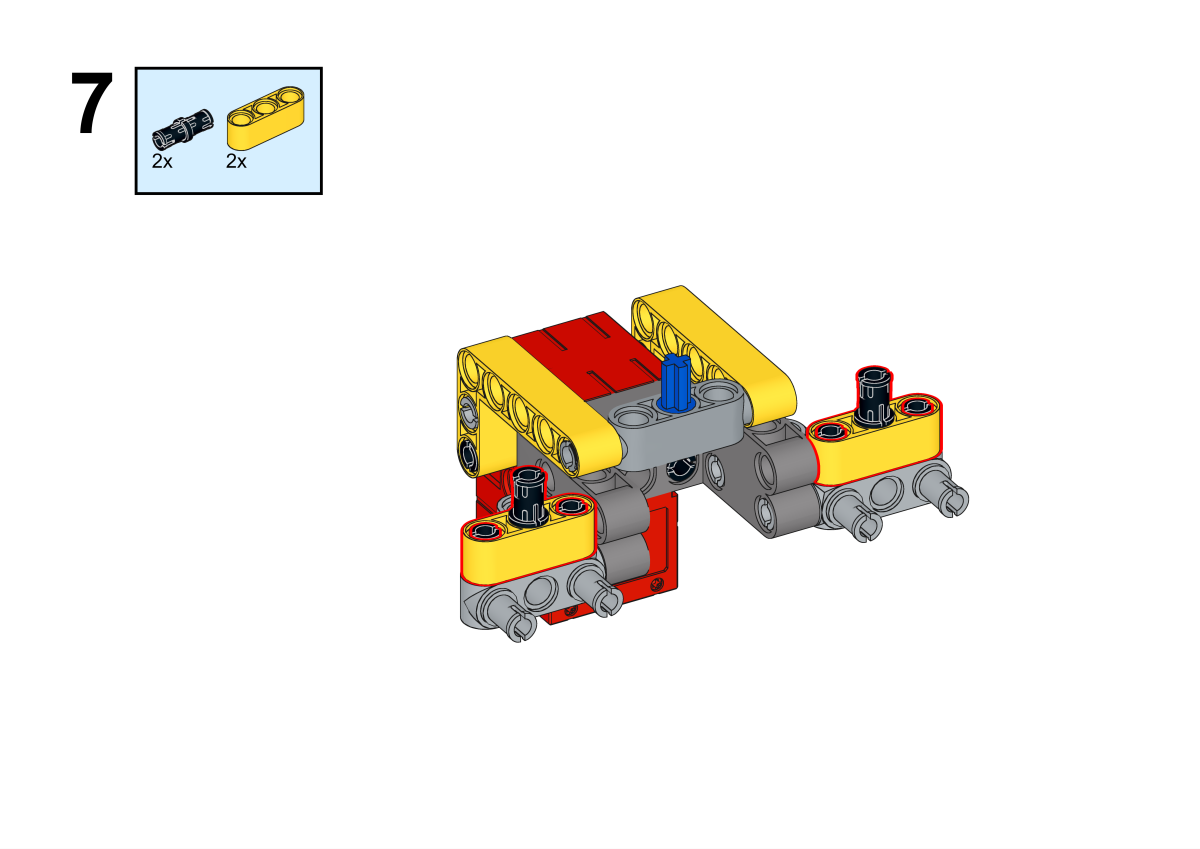

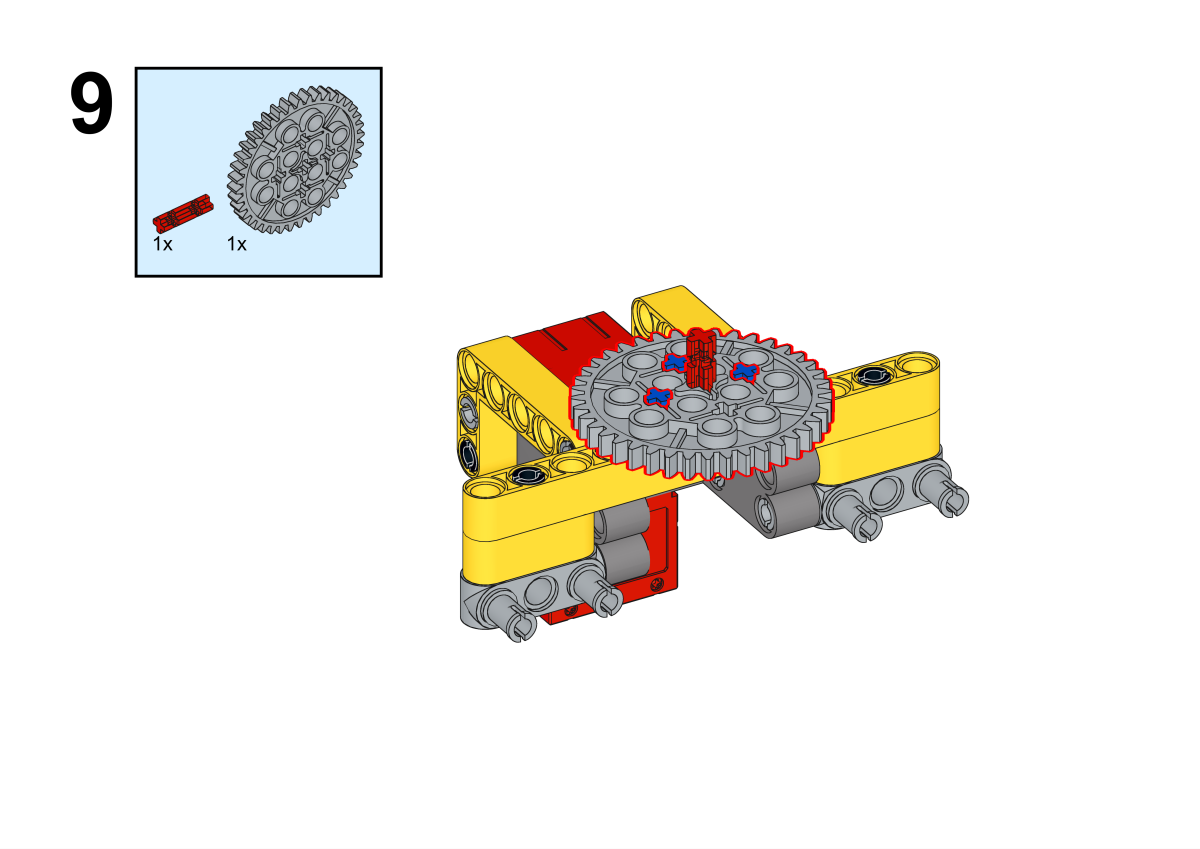
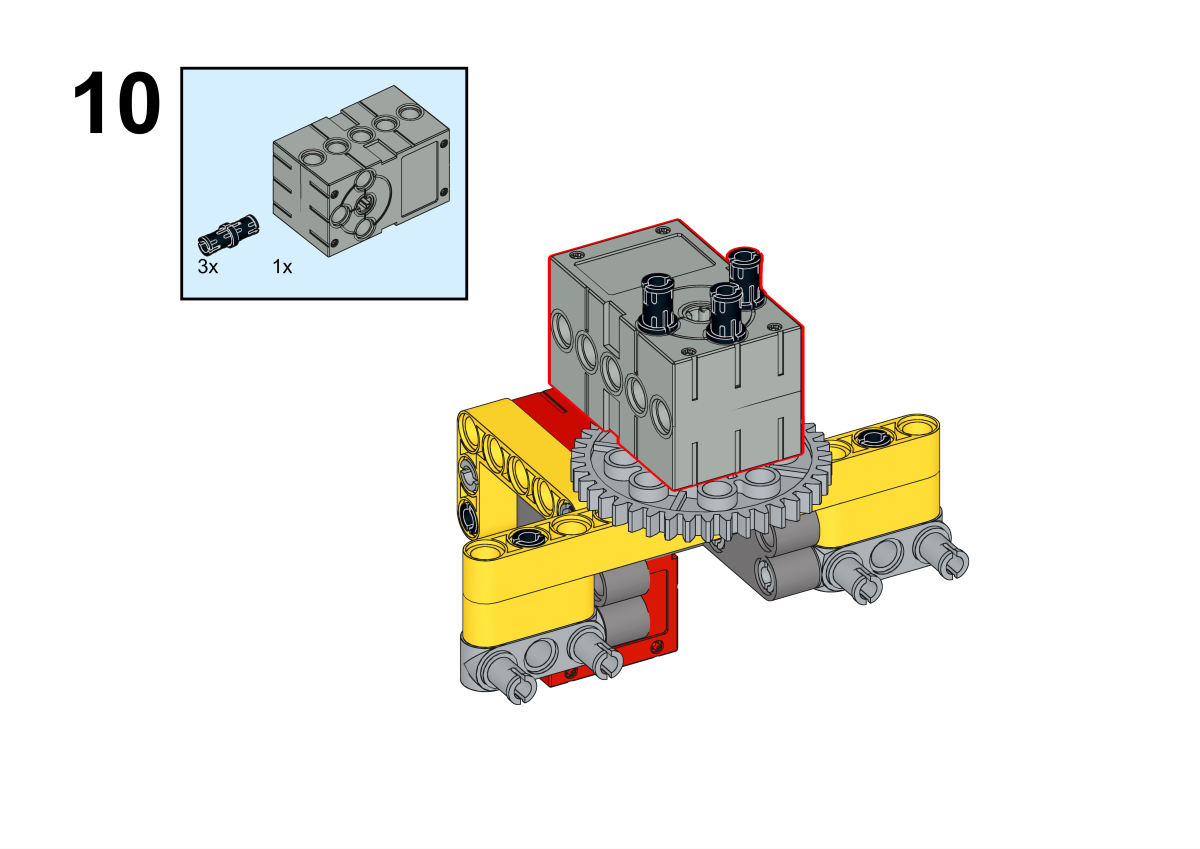


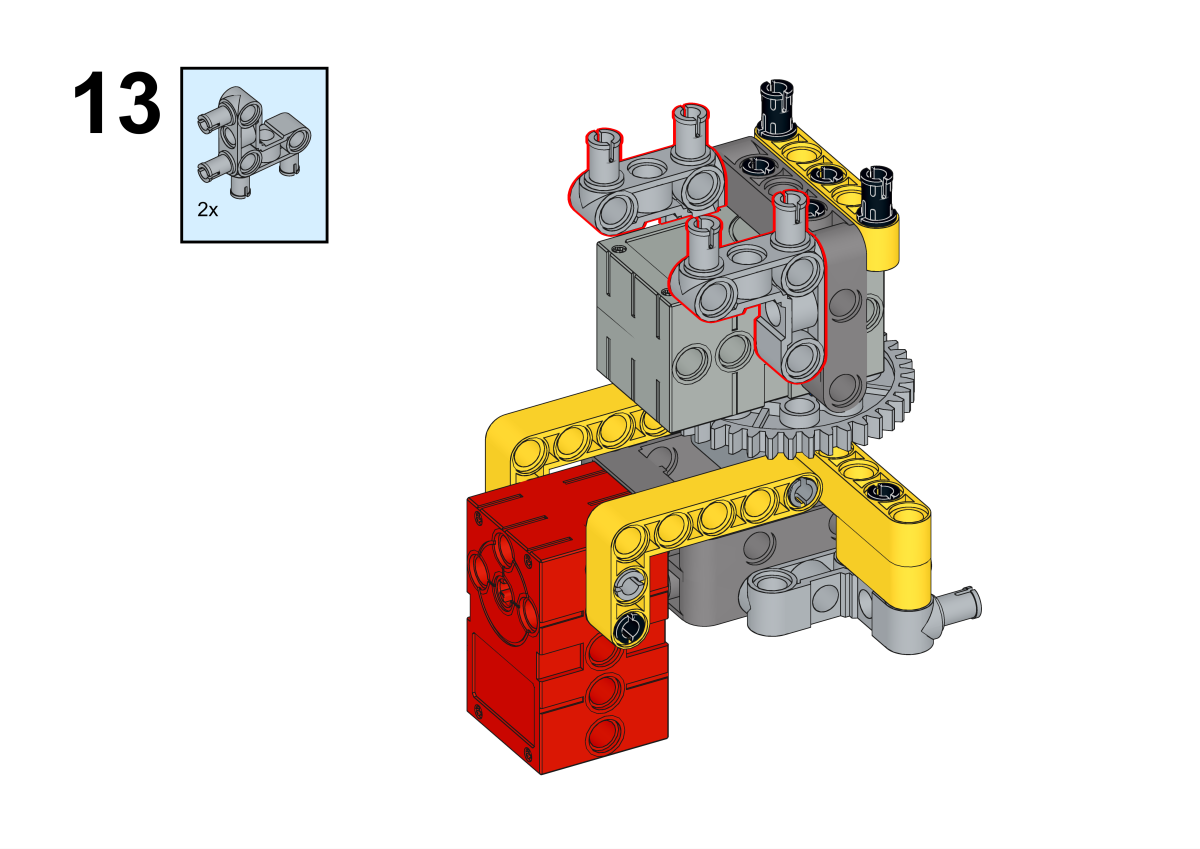
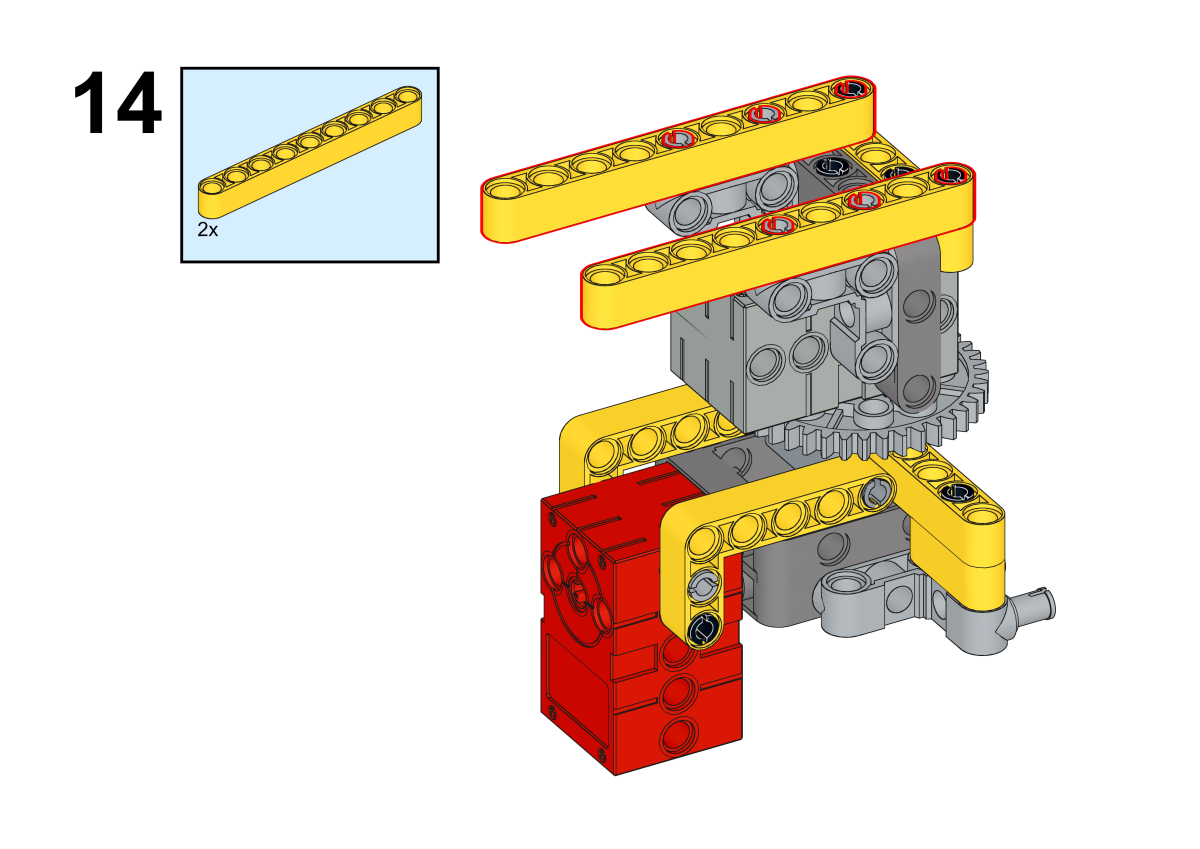
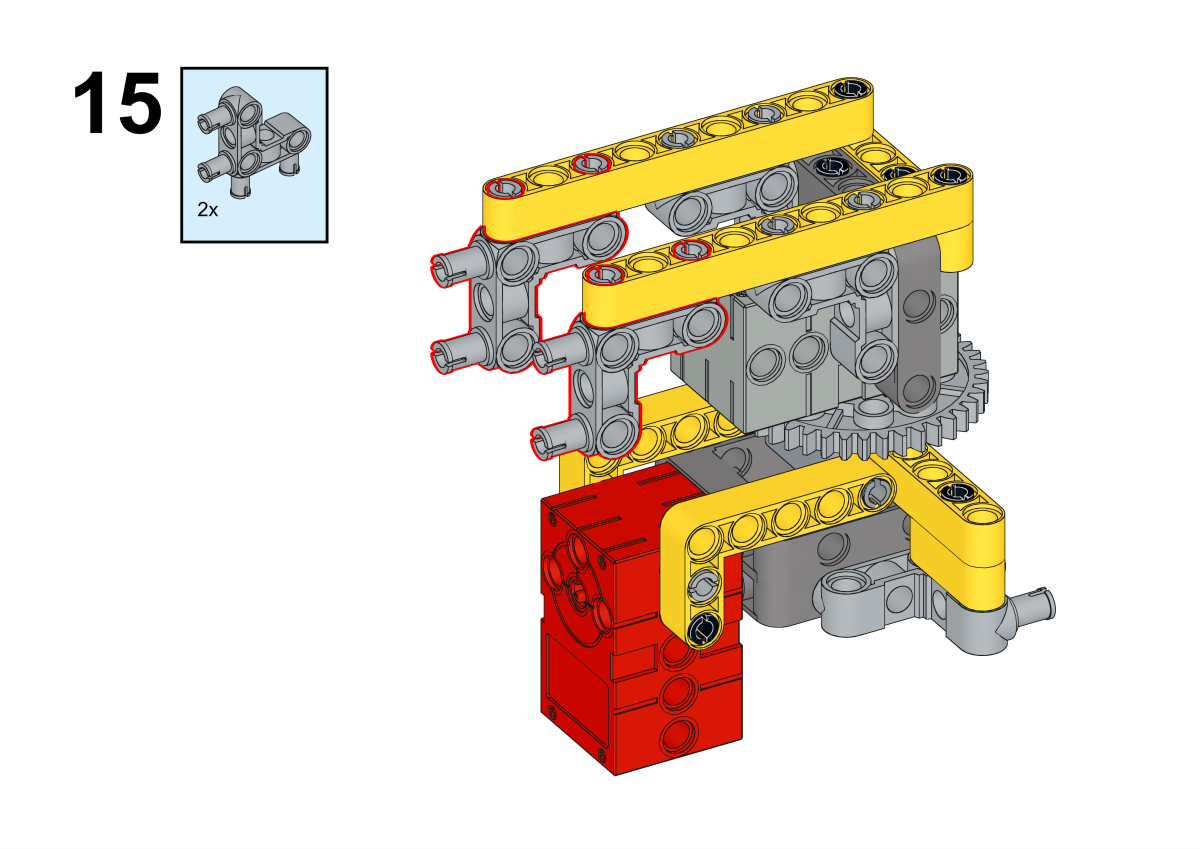
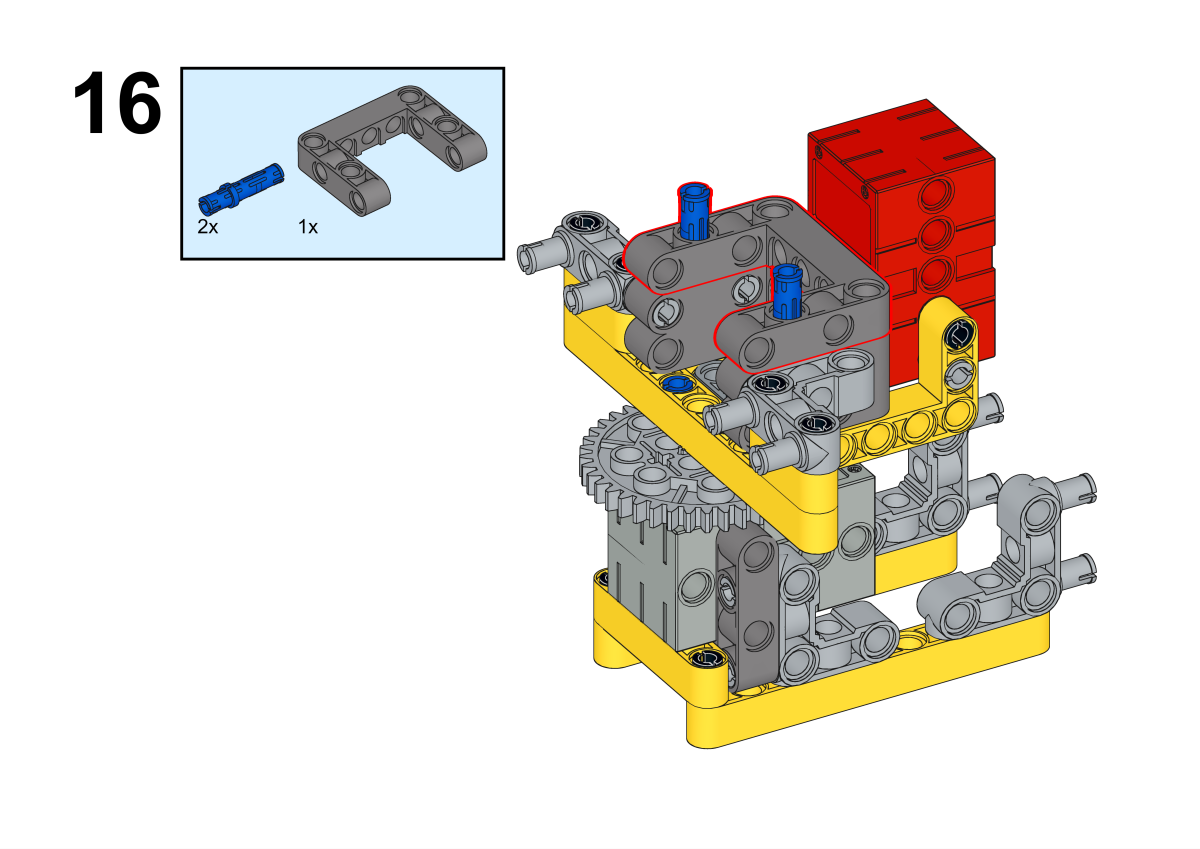



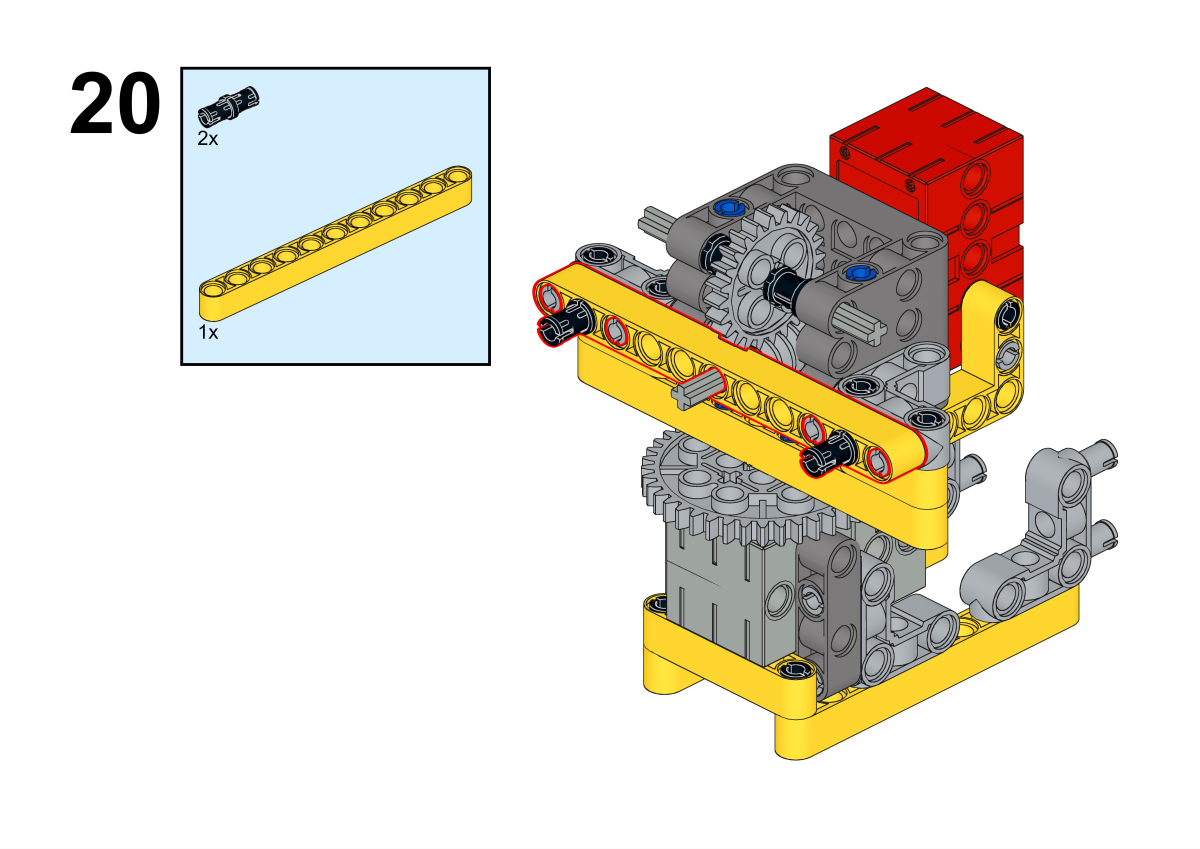

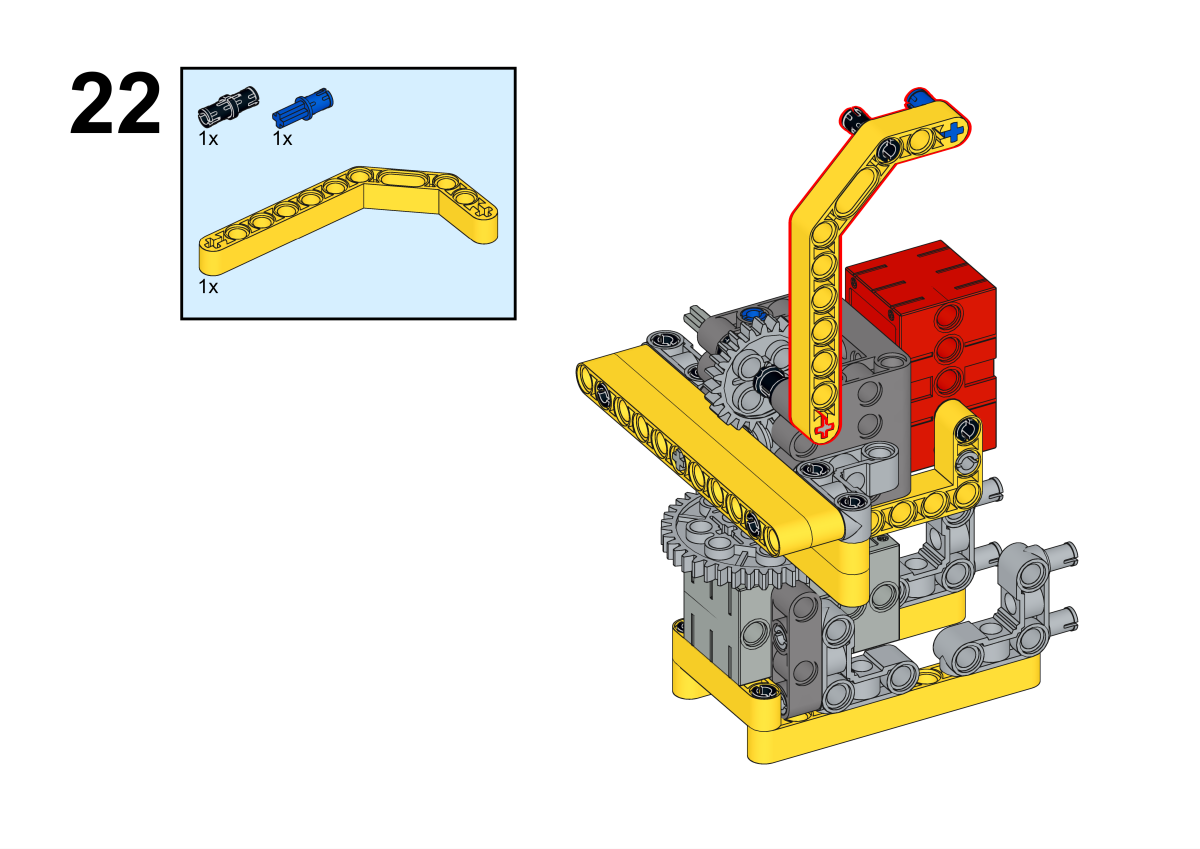
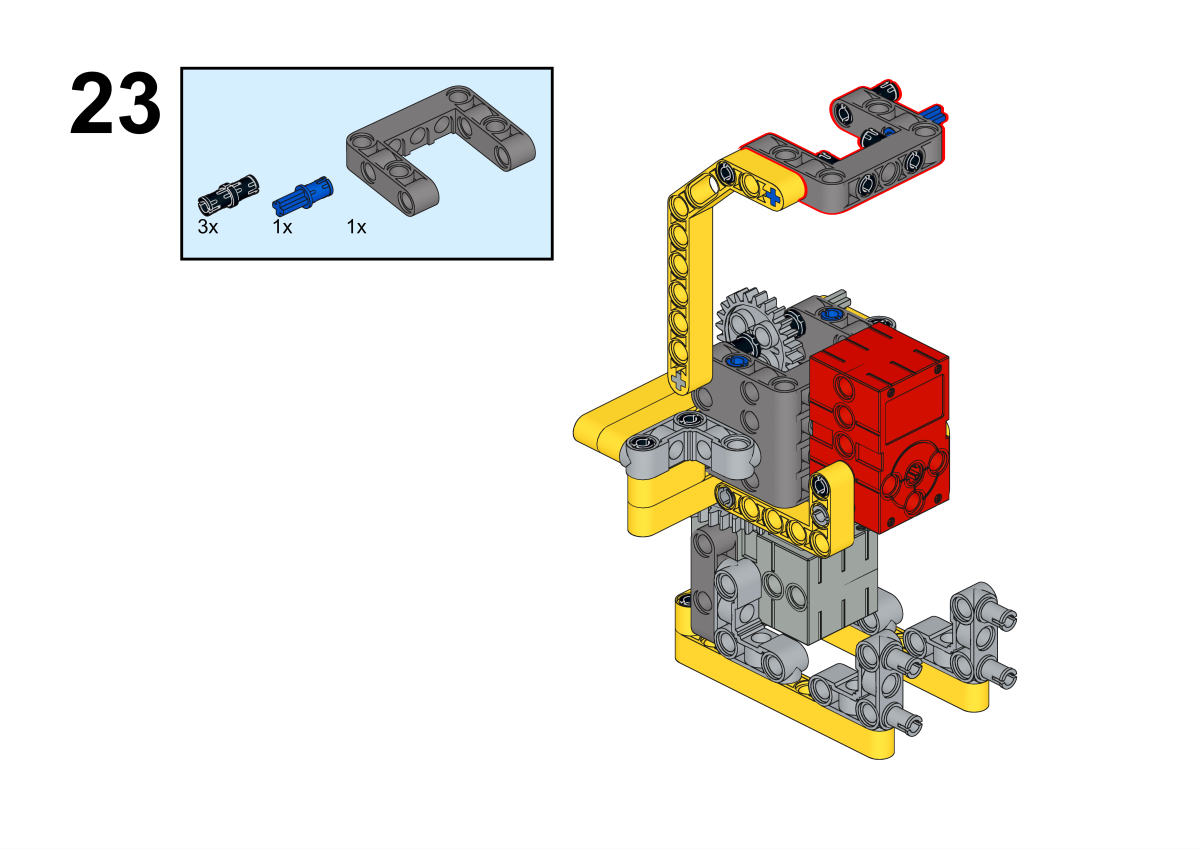
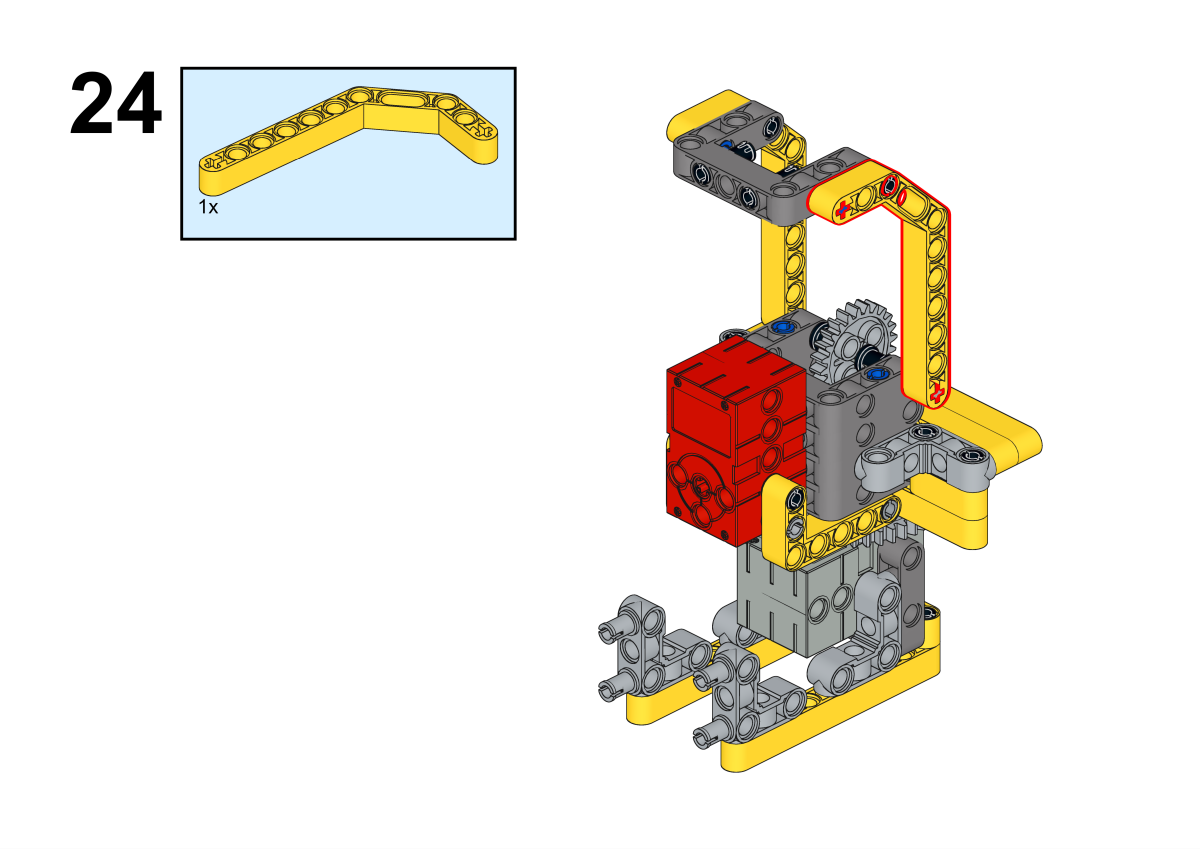
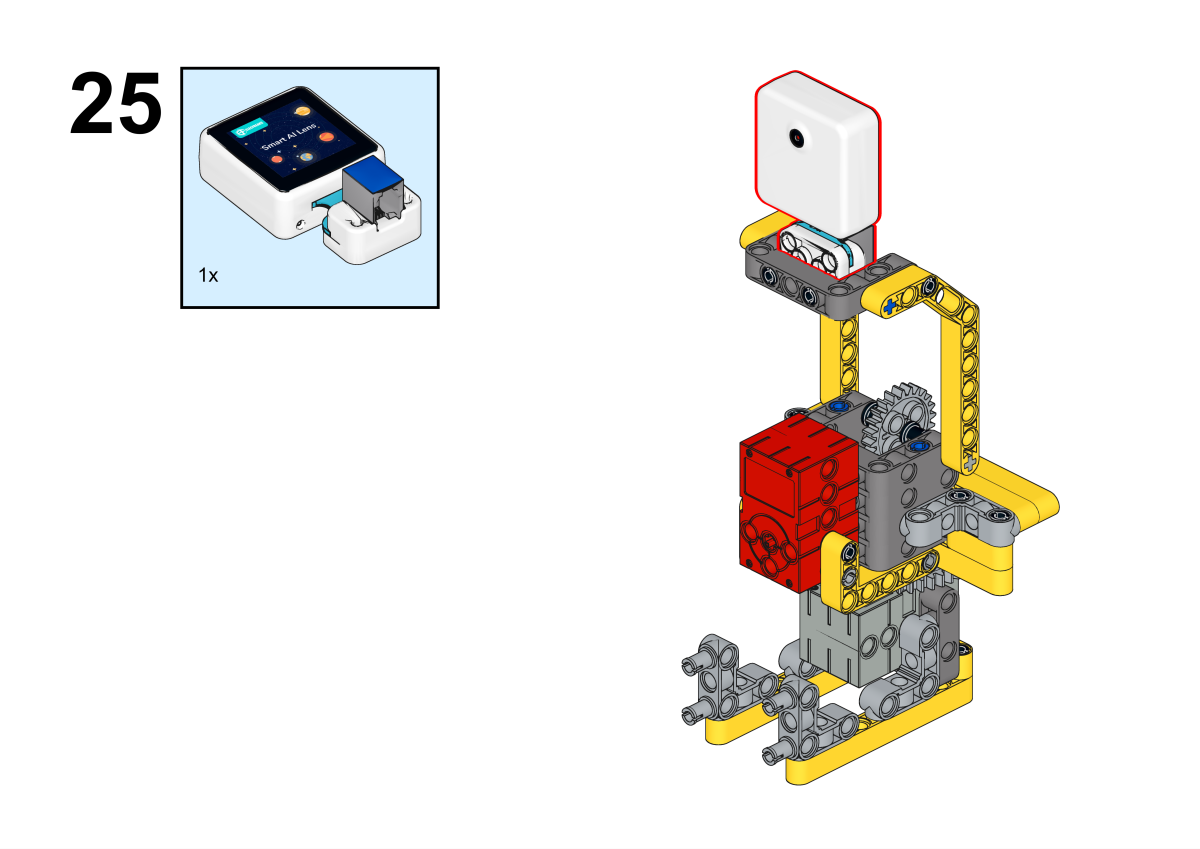

Assembly Completed

Hardware Connection
Connect the servo to S1, the motor to M1 and the AI lens to IIC port on Nezha expansion board.
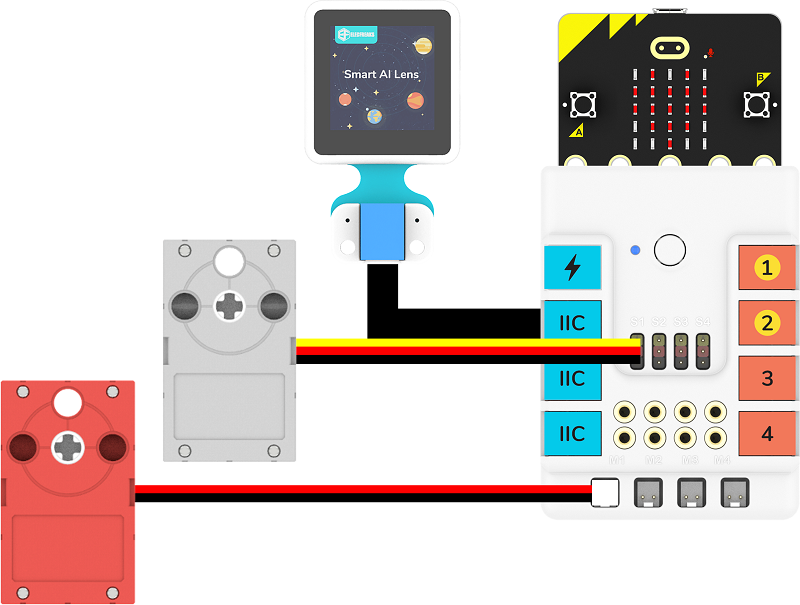
Software Programming
Go to makecode
Create New Project

Click "Extensions"
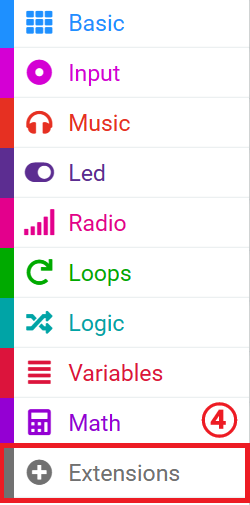
Search with nezha and download it.
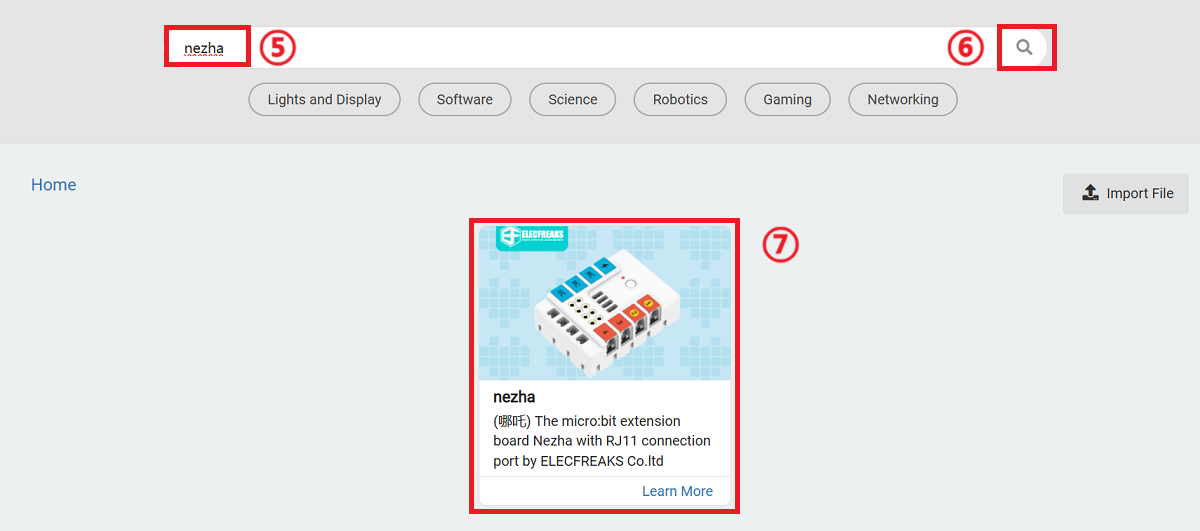
Search with planetx and download it.
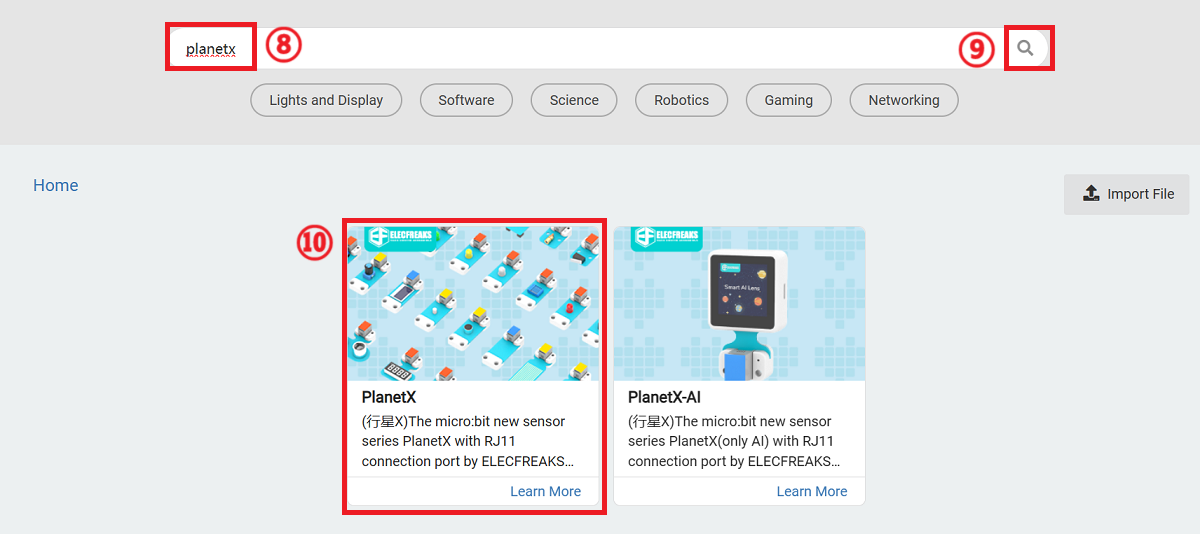
Programming

Link: https://makecode.microbit.org/_PFXJXp4y8RX1
You may download it below directly:
Teamwork and Display
Students are divided into small groups and work together to create and programme the case.
Students are encouraged to co-operate, communicate and share their experiences with each other.
Each group has the opportunity to present the cases they have produced to the other groups.
Example cases result
The face recognition device automatically recognises faces within range and automatically adjusts the camera orientation according to the face position.

Reflection
Group sharing allows students in each group to share their production process and insights, summarise the problems and solutions they encountered, and evaluate their strengths and weaknesses.
Extended Knowledge
What is face recognition?
Face recognition is a computer technology that uses the analysis and comparison of visual feature information of human faces for identity identification. It includes both broad and narrow definitions.
Face recognition in the broad sense is actually a biometric technology that refers to a technology or system for identity confirmation or identity finding through a human face. The technology uses a camera or webcam to capture an image or video stream containing a face, automatically detects and tracks the face in the image, and then performs a series of related application operations on the detected face image.
Face recognition in a narrower sense refers to a technology or system for identity confirmation or identity finding through faces, which is based on the identification and verification of optical face images. Face recognition technology mainly involves three steps: face image acquisition and detection, face image pre-processing and face image feature extraction. After that, the system compares the extracted face image features with the pre-stored facial features in the database to complete the recognition process.
Overall, face recognition is a convenient and safe biometric technology, which is widely used in many fields such as public safety, personal identity verification, video surveillance, payment verification, access control management, etc.
Structural characteristics of worm gear?
Worm gear mechanism is a commonly used mechanical transmission mechanism, which consists of two parts: worm wheel and worm gear. The following are its main structural characteristics:
High transmission efficiency: the transmission efficiency of worm gear mechanism can reach more than 95%, which means it has less energy loss and high mechanical efficiency. High transmission ratio: the transmission efficiency of worm gear mechanism can reach more than 95%, which means it has less energy loss and high mechanical efficiency.
Large transmission ratio: the transmission ratio of worm gear mechanism is usually large, can reach more than 100, which makes it possible to achieve a wide range of speed ratio changes.
Compact structure: the worm gear mechanism has a compact structure and occupies little space, which makes it more adaptable in some occasions with larger space limitations.
Self-locking: The worm gear mechanism is self-locking, i.e. the worm gear can be self-locked when the worm wheel is active, which makes it possible to be used in lifting and craning machinery to achieve constant speed movement of the working mechanism.
Unique motion: The worm gear mechanism has a unique motion, i.e. when the worm gear is rotating, the worm wheel can only move axially in the direction of the worm gear, which makes it possible to use it in some special mechanical transmissions, e.g. for adjusting the position of the mechanism.
Large load carrying capacity: Worm gear mechanism has large load carrying capacity, it can withstand large axial and radial loads, which makes it can be used in some heavy-duty transmission occasions.
High manufacturing and installation precision: Because the transmission precision and stability of worm gear mechanism require high, it needs high manufacturing and installation precision.
In a word, worm gear mechanism has the advantages of high transmission efficiency, large transmission ratio, compact structure, self-locking, unique motion, large bearing capacity, etc. It is widely used in various mechanical transmission systems.